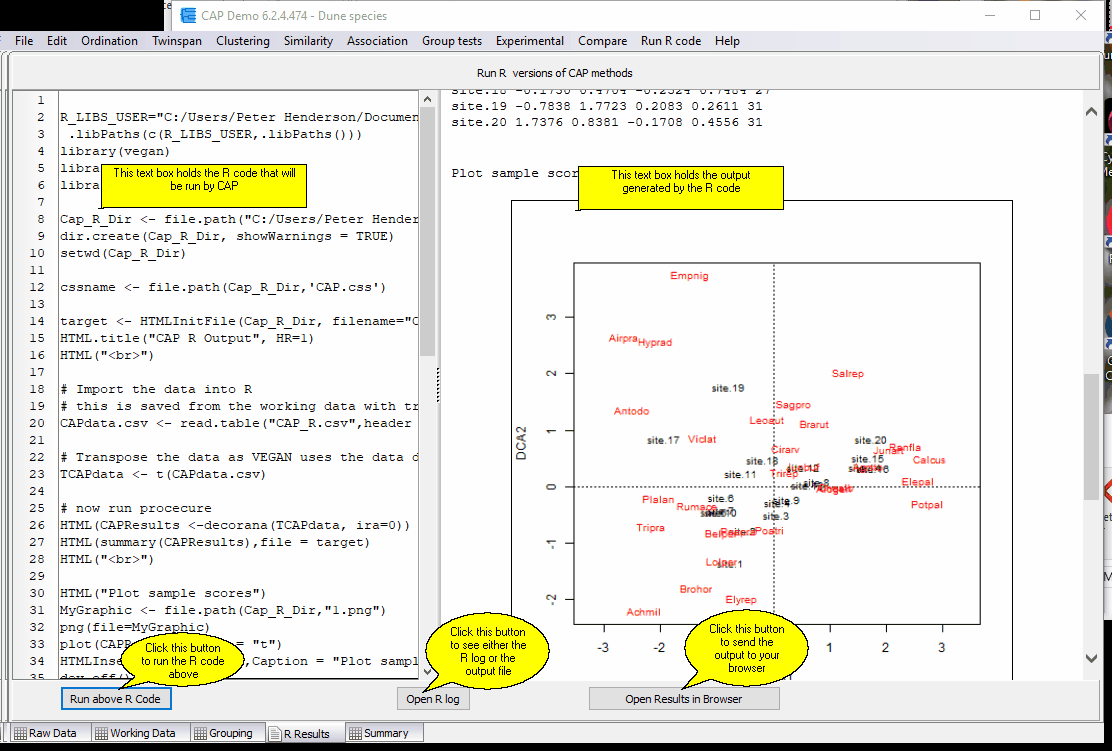Select this option to undertake Reciprocal Averaging using the vegan package in R.
The data set used will be your working data.
This method, also called Correspondence Analysis, is a method of showing the relationship between both species and samples (quadrats) in a reduced space. Originally proposed by Hirschfeld (1935) and Fischer (1940) it was first used by ecologists in the 1960s (Roux & Roux, 1967; Benzécri, 1967) - see Kent & Coker (1992) for more details. The method is described by Hill (1973) and a non-mathematical introduction to the technique is given in Kent & Coker (1992). RA uses Chi-squared distance values; this results in low abundance species (variables) having a possibly disproportionately large effect on the ordination produced, and can over-emphasise the difference in samples containing several infrequently-recorded species. RA performs best for analysing samples that were collected along an environmental gradient. If there are no clear environmental gradients in the habitat under study, or the gradients are short, then PCA may give better results. RA can be applied to both presence/absence and quantitative data.
